İstanbul is a big city, and each of its neighbourhoods is an adventure in itself. For this reason, each Istanbul Instalment features different tips for separate, specific areas. Continue with this post to learn about:
- Major mosque sites on the European side
- Mosque etiquette
- Navigating the bazaars
İstanbul is home to a plethora of cultural sites that harken back to its complex religious and political histories. As the centre of the Ottoman Empire, Turkey was (and still is today) a nexus of influences that have shaped its cultural and architectural landscape.
Most prominent in İstanbul are its various mosques and palaces that once belonged to and were funded by the elite of the empire. Most of these edifices are located across from Galata throughout the Eminönü district in the Fatih region. They are all a quick ride on the tram, but may require a little foot travel too.

(Photo credits by PintsizedPioneer)
As these locations are popular, it is best to plan ahead and arrive early to beat the lines and midday heat. It is highly recommended to acquire an İstanbul Museum Pass to prevent further delays in the day. These passes can be customised to an extent with different option packages including certain sites.
One can purchase these tickets online (however this option requires an address in Turkey to send them to), or it is more likely that one just purchase them at the counter at a major tourist sites (ie Hagia Sophia). Waiting in one huge line is better than multiple for each location!

(Photo credits by PintsizedPioneer)
These passes last for a specified amount of days (2,3,5 or 7) after their first uses, so be sure to strategise which sites to see and when in this time frame!
Topkapı Palace
The first site Nina and I visited was Topkapı Palace. Once the home to sultans, this palace complex dates back to the mid 1400s. It was inhabited for approximately 400 years after its construction, but today, it has been transformed into a museum with exhibits on European Turkish antiquity, various Islamic and Ottoman artefacts, manuscripts, and even features an Imperial harem wing and treasury.
Be aware that one will need to purchase an additional ticket for the popular harem wing, as it is not included in the museum ticket. Check your İstanbul Museum Pass to see if harem wing entry is part of it,

(Photo credits by PintsizedPioneer)
In Turkish, Topkapı is also called Yeni Saray or ‘New Palace’ to differentiate it from the ‘Old Palace’ in Beyazıt Square.
While at Topkapı (and most other sites), it is best to dress modestly for smooth entry and in respect to certain customs, related to these historical and often religiously-minded sites.

(Photo credits by PintsizedPioneer)
On display at Topkapı, there are some supposed belongings to the Prophet Muhammed (fancy!) and also, apparently, Moses’s staff. Yes, that staff, the one he turned into a snake and used to part the Red Sea!
This location is a great first stop on a trek of sightseeing in the day. It is massive, close to public transport, and a good mix of curated exhibits and spaces for roaming. However, keep in mind, there is much more to see!
Sultan Ahmet Camii or ‘Blue Mosque’
The Sultan Ahmet Mosque or the famously named ‘Blue Mosque’ is one of İstanbul’s most well-known sites. It possesses six prominent minarets, and its interior courtyard tiles possess a blue-ish tinge where its nickname arises.

(Photo credits by PintsizedPioneer)
Constructed in the later eras of the Ottoman Empire before its decline, the mosque is still functioning today. For this reason, it closes to non-worshippers five times a day for prayer for about thirty minutes.
Since it is an active place of worship, it is free to enter. And, the line goes quickly. Avoid the people who say they can get you in faster, as 1) they cannot and 2) they are just going to try to lead you somewhere/to their shops to sell you something.

(Photo credits by PintsizedPioneer)
Do As I Say, And As I Do!
Proper mosque etiquette is something that a lot of people do not know that much about.
I blame lack of exposure to Islam. I, myself, am not Muslim, but I have been in various mosques. But, for those who have not, given the current political and social climates in some countries and rising Islamophobia, it might feel a bit daunting. It should not be though.
For me, as a male-presenting individual, it is not so hard to follow the rules of dress.
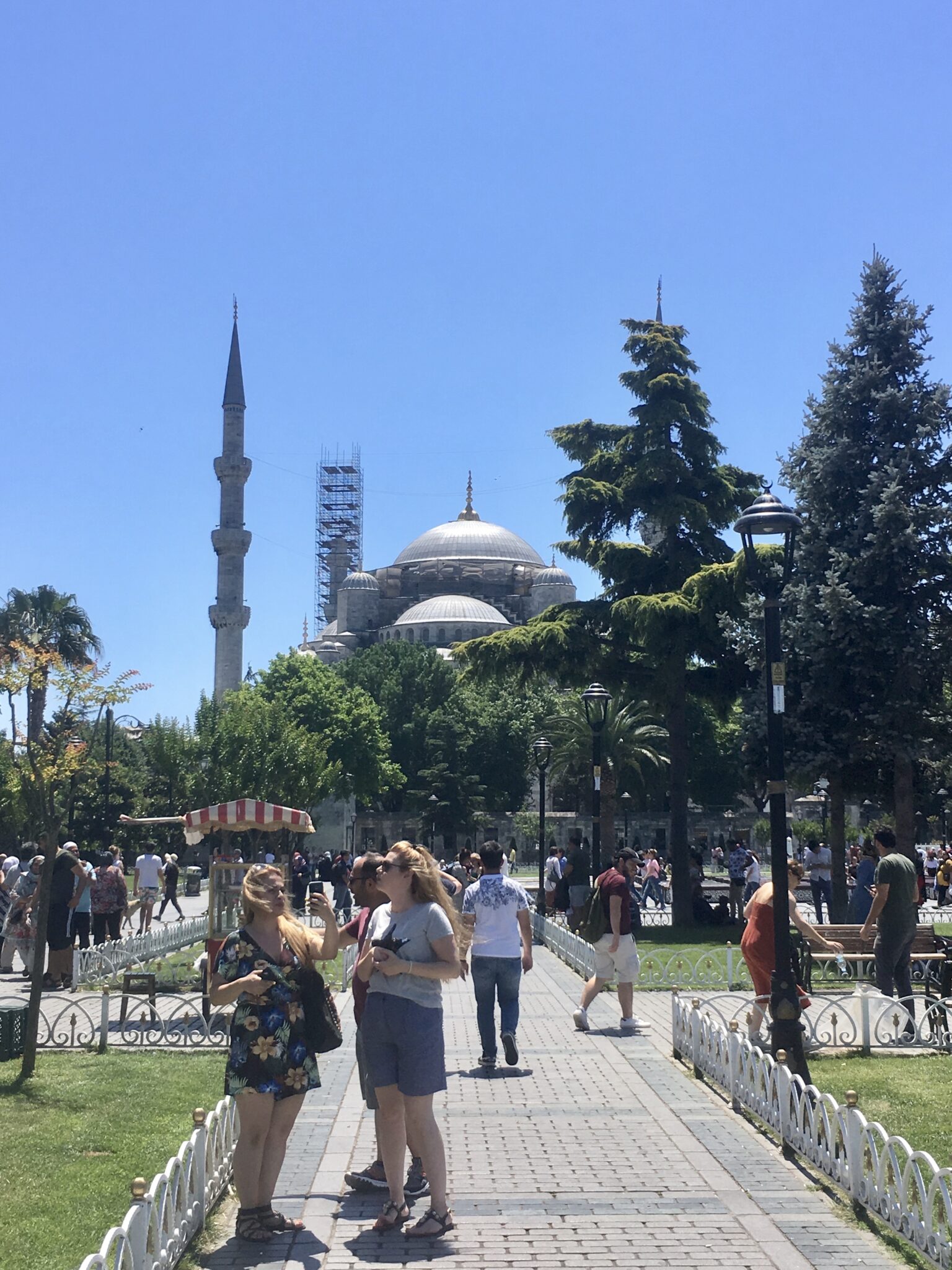
(Photo credits by PintsizedPioneer)
For men, the main issue we might encounter is mistakenly showing our knees. My trademark overalls covered them at the time, so I was in the clear. But, legitimately, there were tourists (including men) who chose to wear short-shorts – at a mosque. Do not do this!
For Nina, the restrictions for her were more stringent. She borrowed a scarf from me, but also had to wear more modest dress and not show too much cleavage.
Luckily, this mosque will provide visitors with appropriate coverings. They do recycle these rather unflattering pieces of cloth and stretchy pants, so I suggest you wear your own articles.
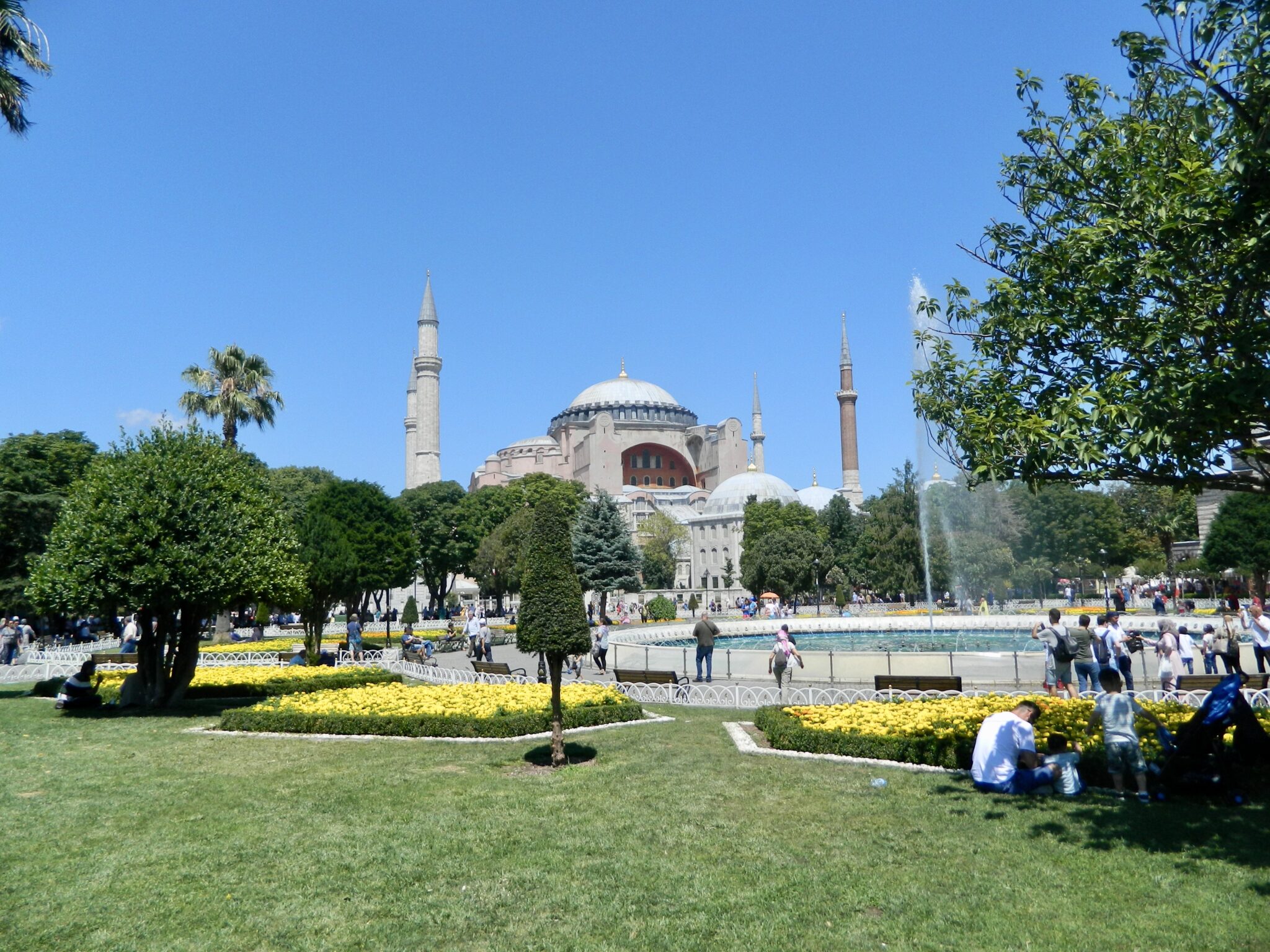
(Photo credits by PintsizedPioneer)
Also, when entering a mosque, it is custom to remove one’s shoes. The ‘Blue Mosque’ also supplies little plastic bags for your shoes, so use them, please.
The interior of the mosque is what one might expect. Adequate space for prayer. Comfy carpet. And, great sculpting!
Be respectful to those who are there to pray!
There is also a little office inside where an imam will answer questions about Islam! There is actually a good about of informational posters about the faith throughout the grounds. And, attendants will explain certain important aspects of the faith like ‘what is the Hajj?’ if prompted.
Hagia Sophia or Ayasofya
Across from the ‘Blue Mosque’ rests the Hagia Sophia or Ayasofya in Turkish.
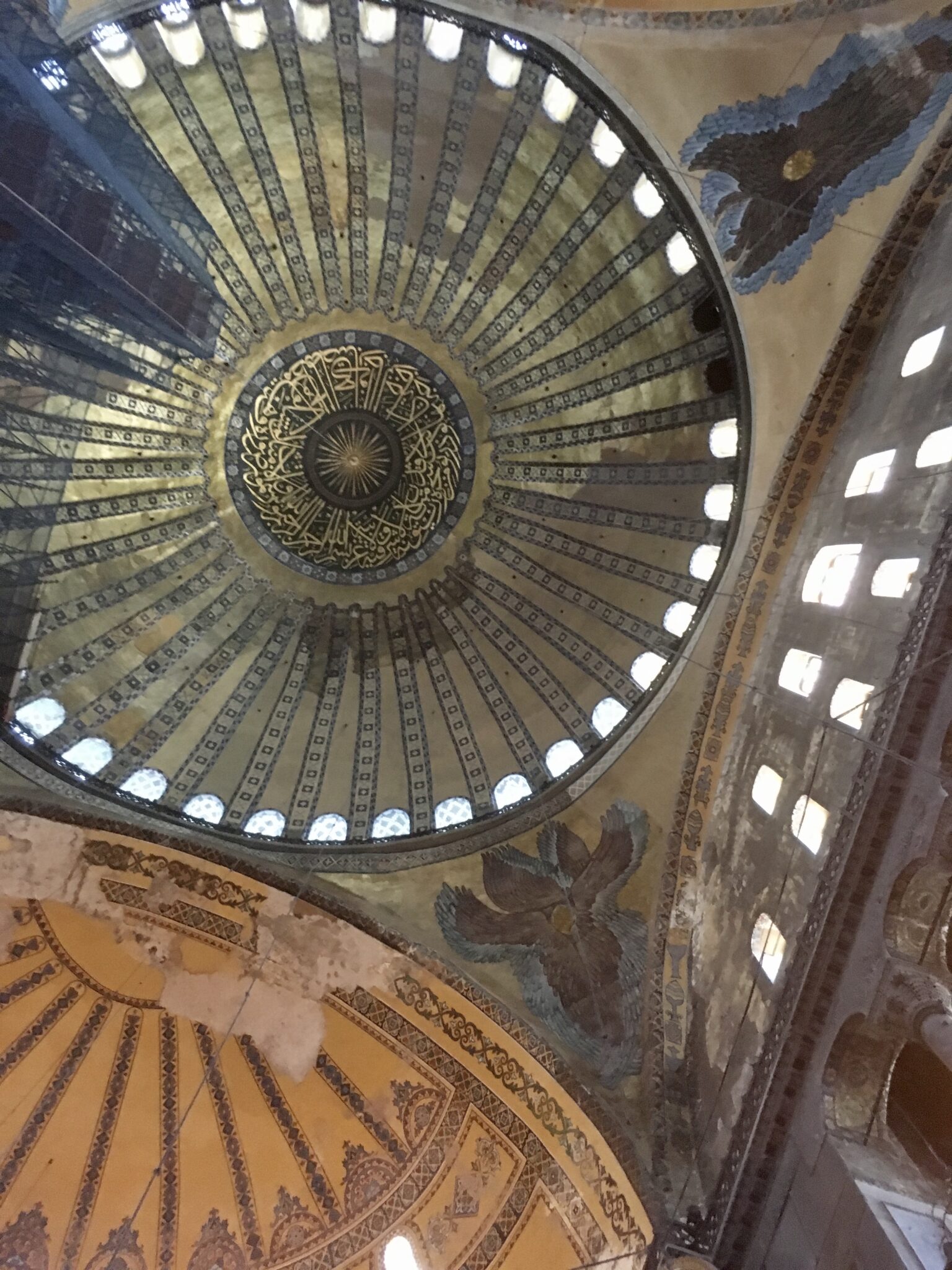
(Photo credits by PintsizedPioneer)
This building has gone through multiple changes of face and faith. Originally, this site was a Byzantine Christian church, but then it became a Greek Orthodox church, and then a Roman Catholic one …

(Photo credits by PintsizedPioneer)
After many years and one installation of Christianity later, it became a mosque, and today, it is a historical museum that is included in the İstanbul Museum Pass.

(Photo credits by PintsizedPioneer)
The Hagia Sophia dates back to the 500s CE, which predates a lot of sites in İstanbul including the ‘Blue Mosque’. Since it is not an active mosque, certain dress is not a requirement to enter, but do be respectful.
When Nina and I visited this site, the line was not long. However, the Hagia Sophia is another one of İstanbul’s most famous sites, so be prepared for a wait during peak hours.
Let’s Get Bazaar
So after an early morning visit to some mosques and a palace or two, maybe it is best now to take a break?
I would not say that bazaar shopping is itself a relaxing task, but it is fun and a great way to sample some lokum or better known as Turkish delight in English.

(Photo credits by PintsizedPioneer)
Of the bazaars to visit in İstanbul, the Grand Bazaar and the (Egyptian) Spice Bazaar are the most popular for tourists to peruse through.
These bazaars can be hectic, and the shopping etiquette is important to keep in mind.
Nina felt obligated to buy once sampling enough from a stall. However, I am a ruthless, stingy bitch and never feel too pressured into buying in any market. The Grand Bazaar (Kalpakçılar Cd. 22) is, like its name says, grand, so there will always be a constant flow of customers. Not everyone needs my business.

(Photo credits by PintsizedPioneer)
Prices are rather flexible, so I recommend asking around a bit before buying to suss out how much the average price is. Also, play hardball. Many of these shops sell the same products, so there are options!
It is also so fascinating how multilingual the shopkeepers are. Many can converse (and sell) in multiple languages including a mix of French, German, Arabic, Russian, English, Japanese, and Mandarin among others. It is impressive, but not surprising. Multilingualism was once the norm globally, and commerce was a big factor in this trend.
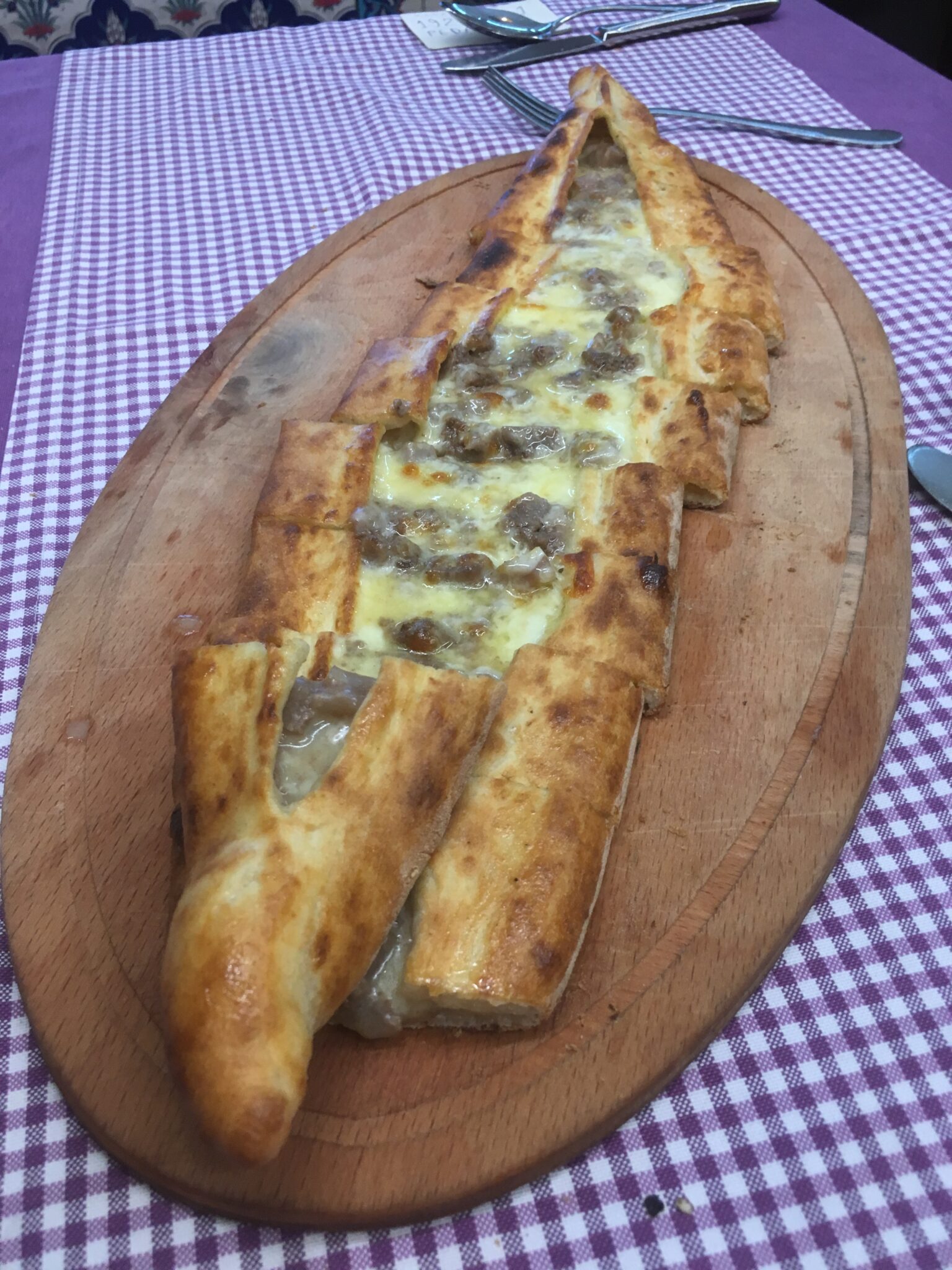
(Photo credits by PintsizedPioneer)
To be frank, there are better places to buy souvenirs than in a bazaar. One pays for the experience here, but not the best prices usually …
While the Grand Bazaar is a bit of a labyrinth for shoppers, but does have some places to eat where it is possible to rest for a spell.
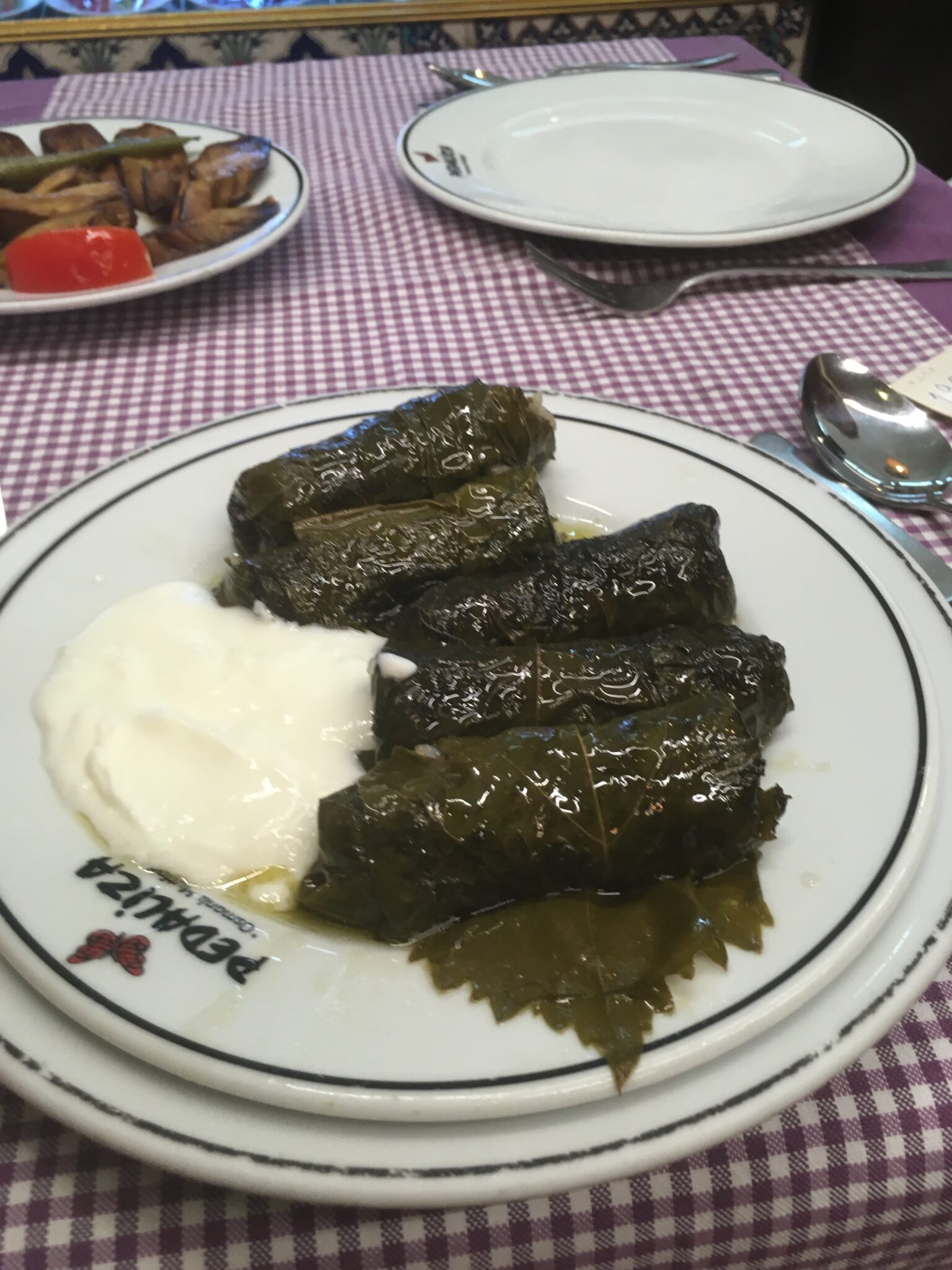
(Photo credits by PintsizedPioneer)
I recommend Pedaliza Restaurant, which offers traditional cuisine at a cheap price. This eatery rests on the outskirts of the bazaar and has pretty decent wifi too. After some (window) shopping, this place is a great locale for a recharge.
Spice, Spice Baby!
The Egyptian Spice Bazaar or Mısır Çarşısı (Erzak Ambarı Sok. 92) is named for its creation at the expense of Egyptian revenue in the time of the Ottoman Empire.
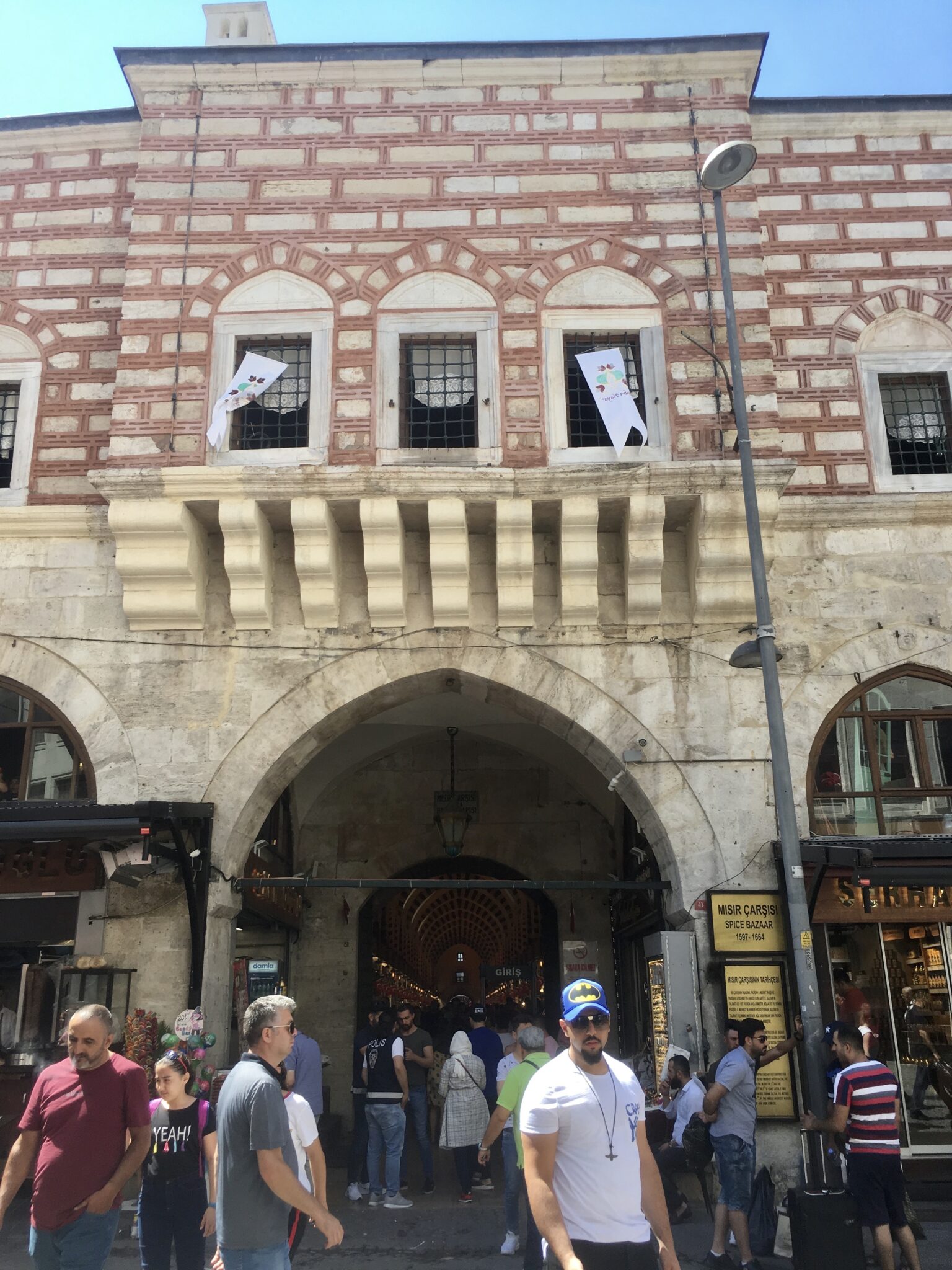
(Photo credits by PintsizedPioneer)
Today, it is still a major marketplace with loads of spices and other edibles like teas, lokum, and helva/halva (sweet sesame candy) for sale too.
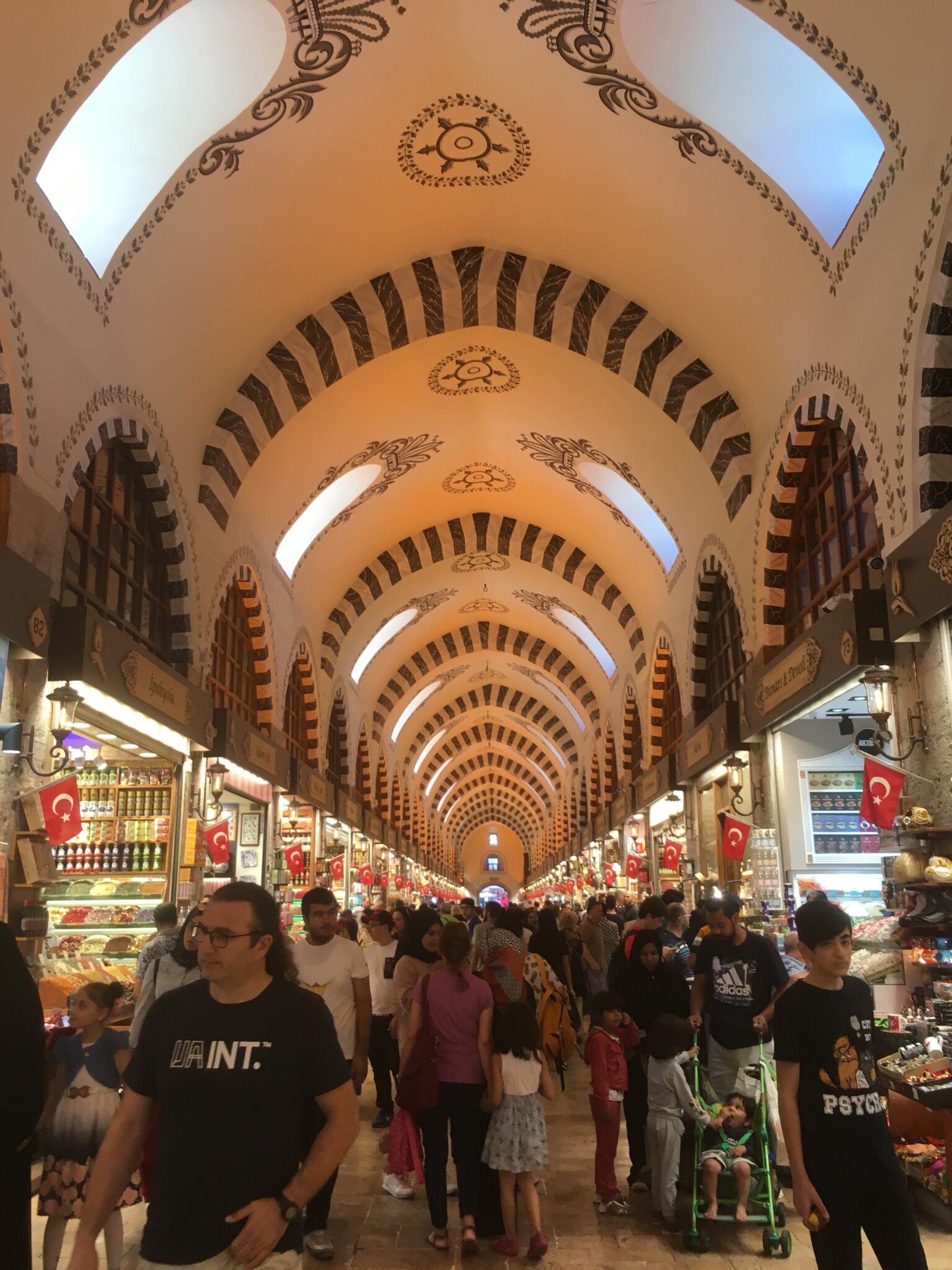
(Photo credits by PintsizedPioneer)
As one might expect, the Spice Bazaar is the place to buy edible souvenirs. However, if haggling is not one’s cup of tea, I recommend just heading over to Hafiz Mustafa (Hafiz Mustafa’s Instagram), a historical (established 1894) and delicious confectionary that sells baklava, sweets, and coffee for tourists and locals.
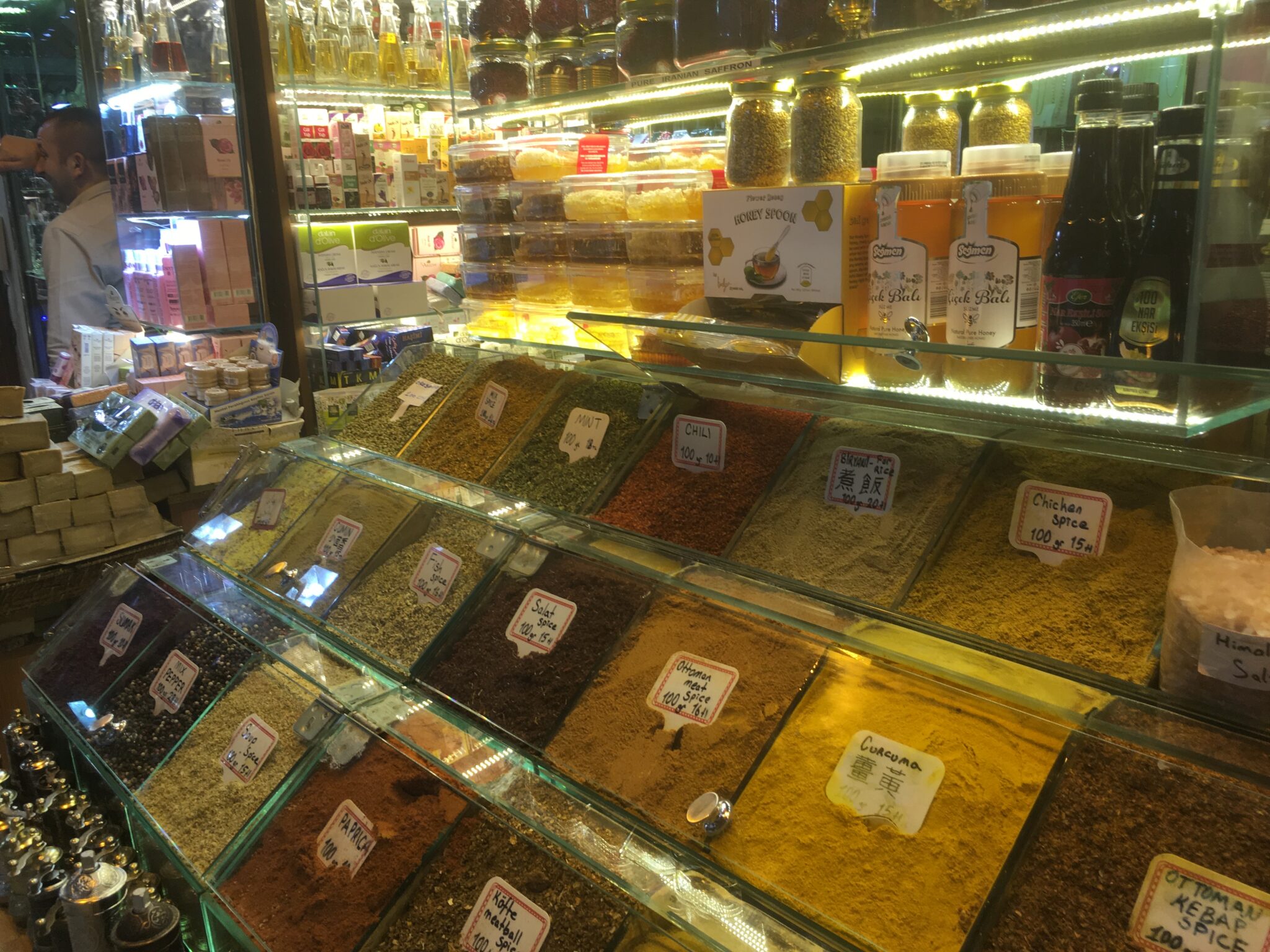
(Photo credits by PintsizedPioneer)
This shop is busy, but the food is phenomenal. Nina ventured in with me after I could not find the halva I wanted in the bazaars. (I am quite particular.) The bazaars are fun, but this confectionary chain is the real deal and just has this air of luxury to it too. I recommend stopping by!
More Mosques!
Well, guess what? There is still more to see.
To be honest, the sites in this post make up only a fraction of what İstanbul offers. These are just most of the big names on the European side …

(Photo credits by PintsizedPioneer)
Anyway, after a trip to the bazaars and some morning visitations, finishing off the afternoon at the Süleymaniye Camii or Süleymaniye Mosque is a great option. Located on a rather steep incline close to the bazaars, this mosque complex is a result of Süleyman the Great who likened himself to King Solomon.
The ego, on this one …

(Photo credits by PintsizedPioneer)
As one may be able to tell, mosque making was sort of a pissing contest at times for men. Ever wonder why something is so large and opulent? Men’s fragile egos, historically.
The Süleymaniye Camii possesses a great view of the city and Bosphorus, which is worth the trek up. Like with the other sites, this mosque is popular with domestic tourists too. Nina and I helped some people with their family shots, and in turn, we got some cute photos of ourselves too in exchange.
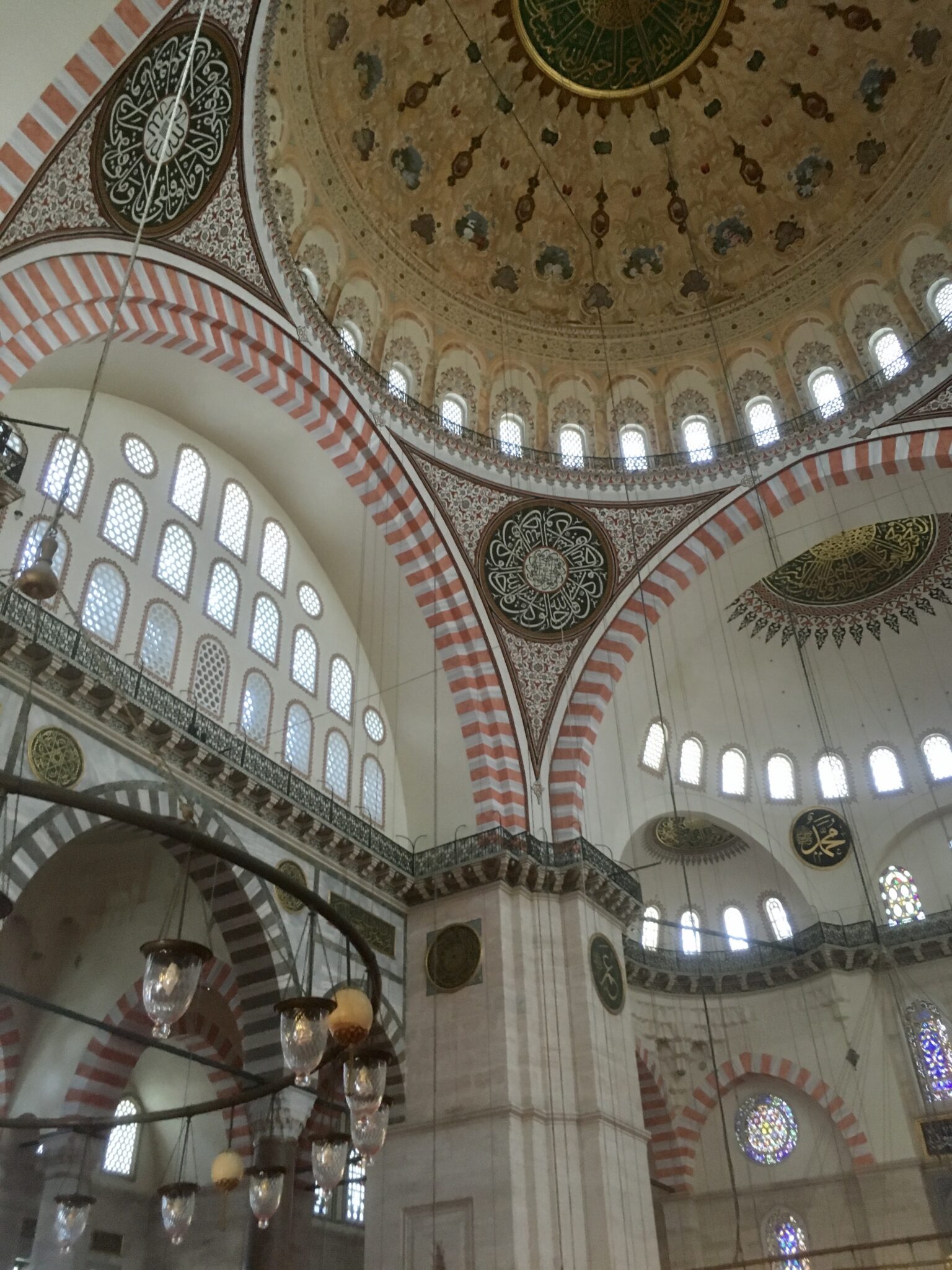
(Photo credits by PintsizedPioneer)
This mosque is rather intricate in its facades and tiles designs even compared to the ‘Blue Mosque’. It also features a collection of mausoleums that house the remains of Süleyman himself and his wife among others. Remove one’s shoes to enter them too!
Nina and I thoroughly enjoyed this site for its lack of crowds and relaxed atmosphere. With more shaded green spaces and fewer people overall, it was a place where we felt we could enjoy and extend our time.
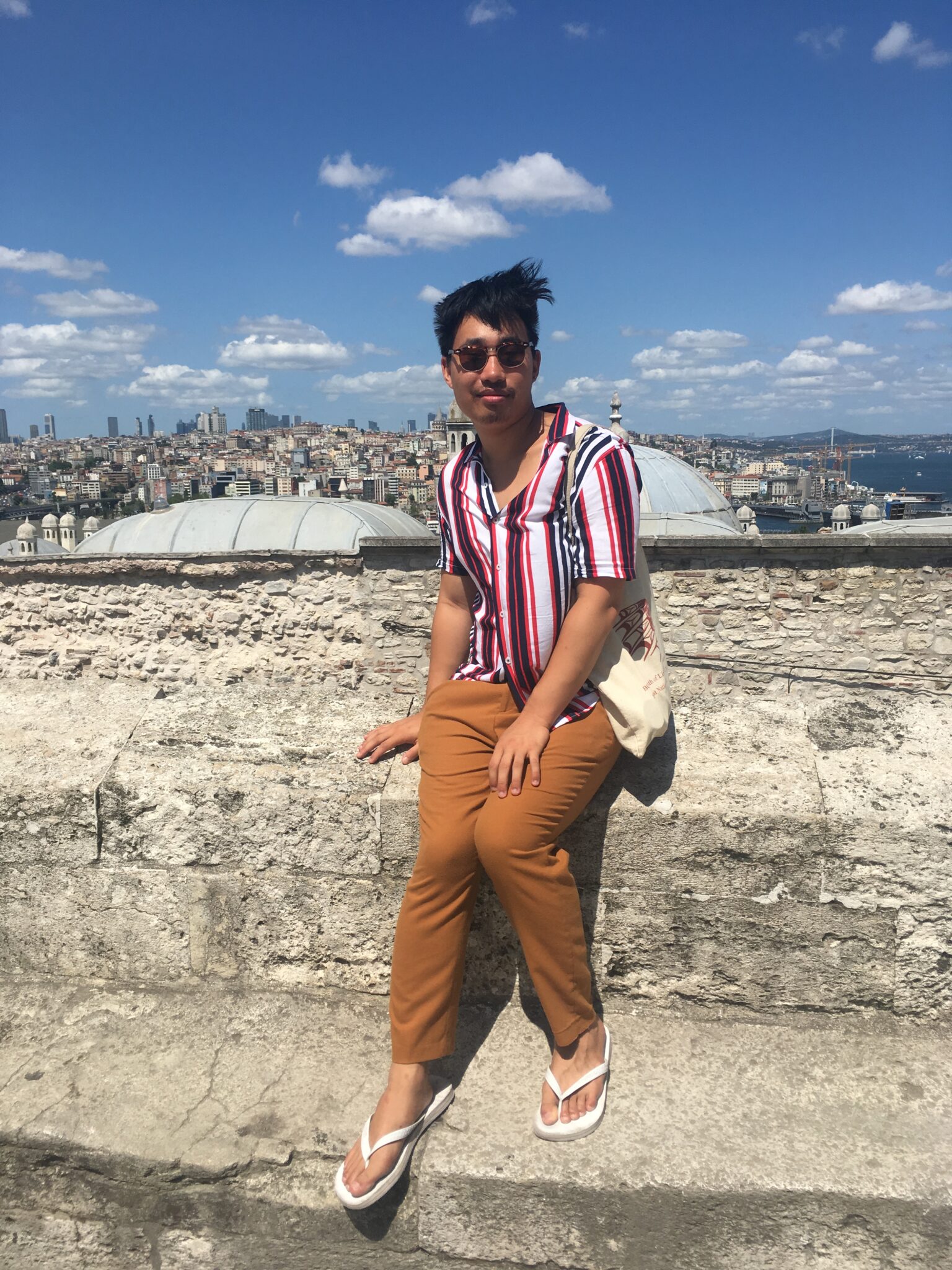
(Photo credits by Croatian goddess, Nina P.)
As this mosque is also functioning, there is no price for entry. However, appropriate clothing is required, and there are attendants who supply cloth coverings if necessary. Also, at prayer times, tourists cannot enter who are not there to pray.

(Photo credits by PintsizedPioneer)
Just prepare beforehand and cover yourselves. It is not that hard. (Cotton breathes!)
Phew!
After visiting all these sites, likely in tremendous heat, mostly on foot, one will feel exhausted. And, that is a good feeling.
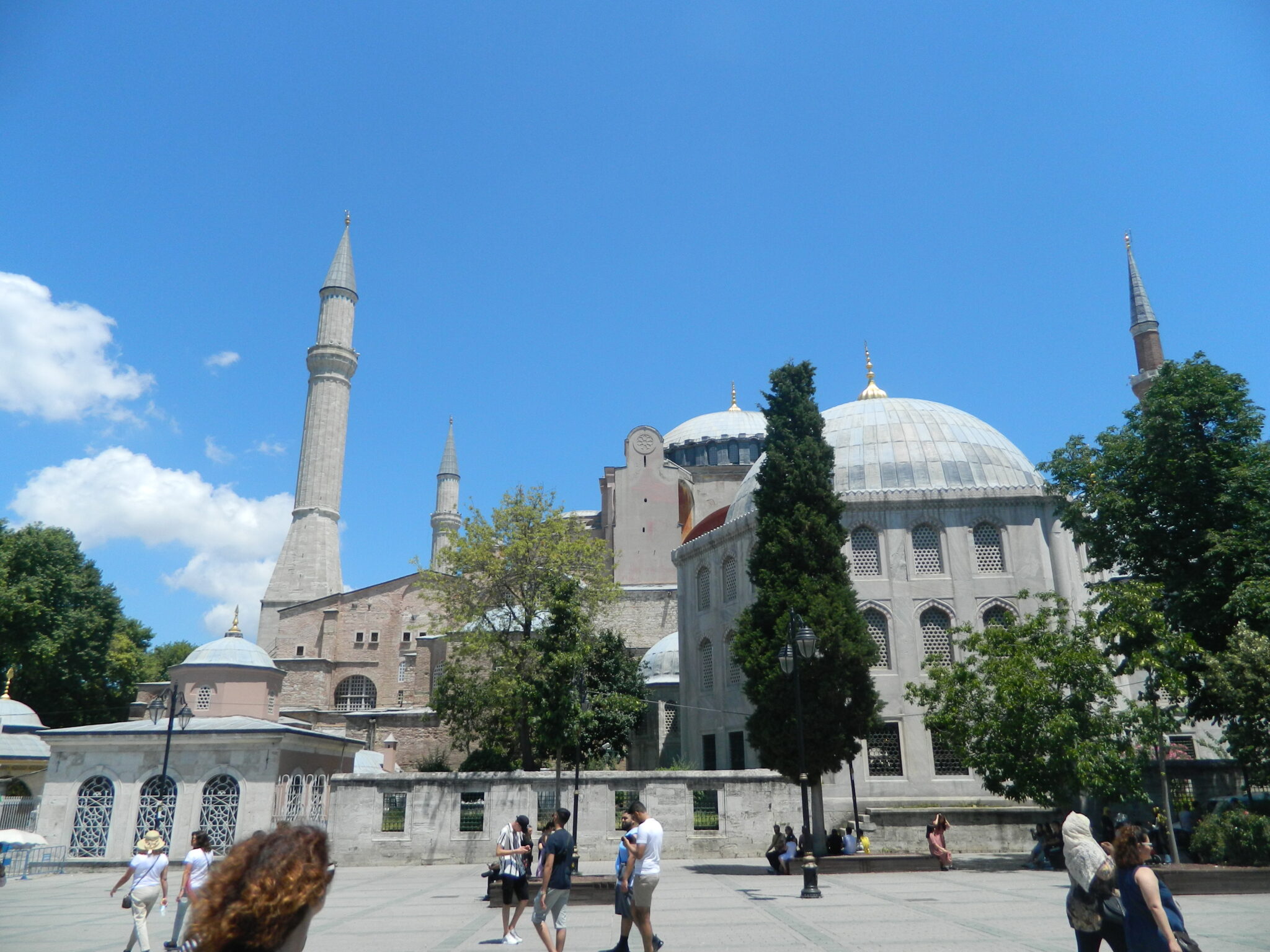
(Photo credits by PintsizedPioneer)
One of my favourite feelings is that of accomplishment after a day of sightseeing in a new place. I do suggest seeing as many of the main sites in the city as possible in the smallest amount of time. The only reason I recommend this route is that I find one gathers momentum in these sorts of things. This suggestion does not mean rush through them, however.
Delaying attractions can often leave them unvisited by the end of a long trip in an entertaining city. In a city like İstanbul, plan ahead and stick to it! The city is not going anywhere, but you will be eventually.
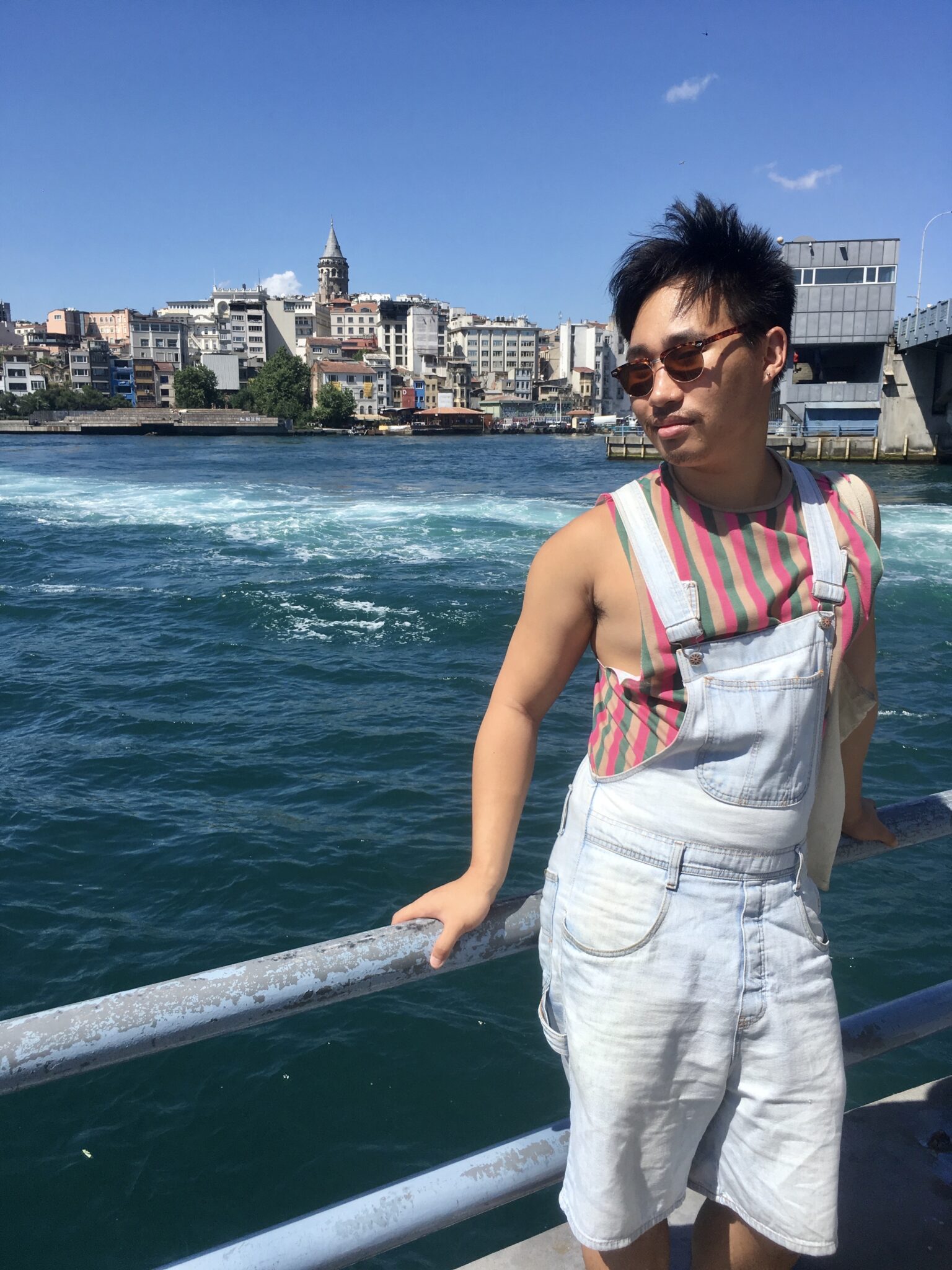
(Photo credits by PintsizedPioneer)
It is all worth seeing, so get out and spend the day exploring. In a blink of an eye, the adventure will all be over.
Up next, we have our last İstanbul Instalment with a trip up the Bosphorus and through Beşiktaş! Then, it is off to Edinburgh, Scotland for a quick recap on why it is such a gay-friendly destination and then … drumroll, please … we are heading to Brasil in February. Stay tuned and travel often.
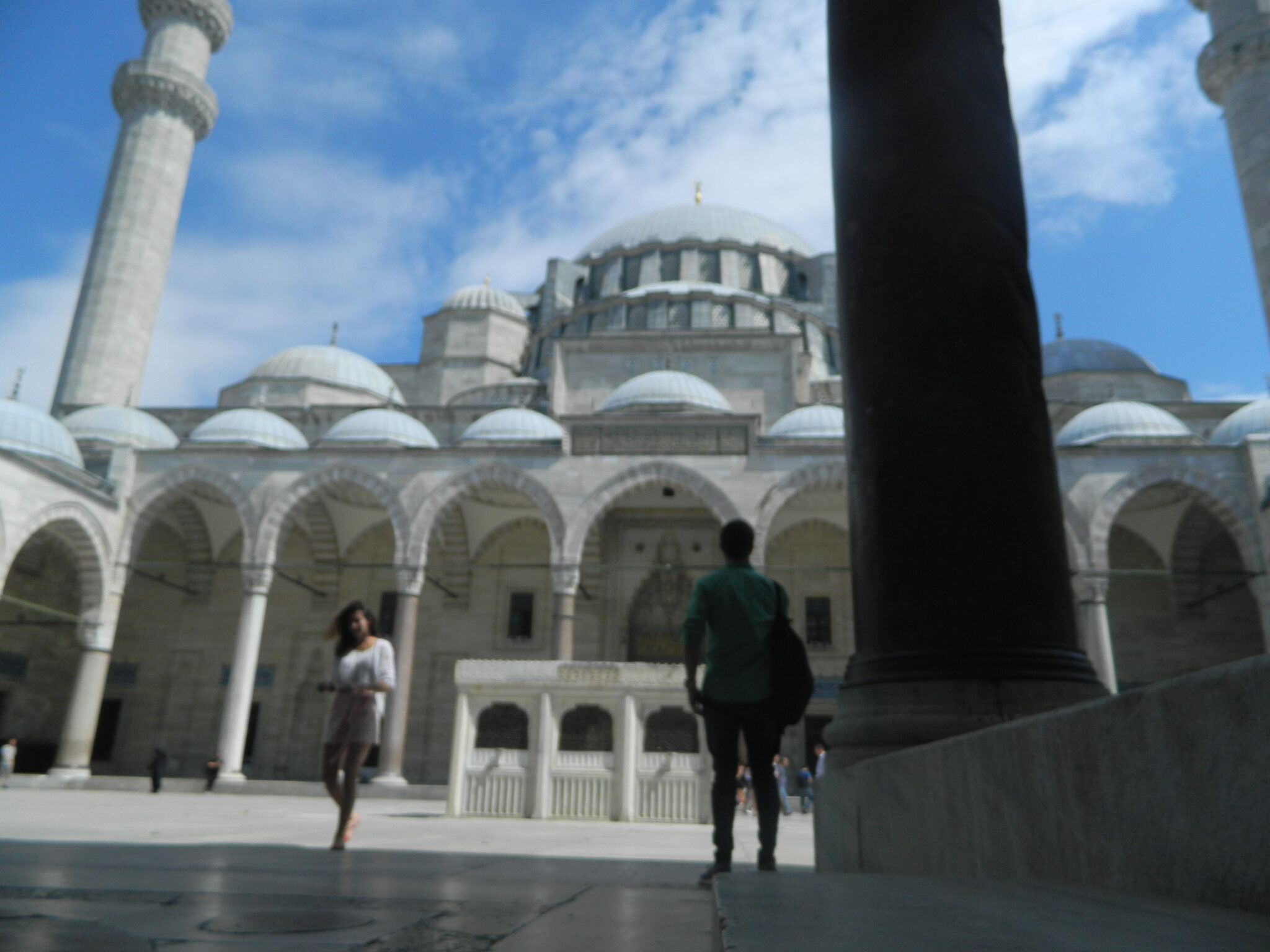
Pingback: Istanbul in Instalments: Taking a Bosphorus Cruise & Exploring Beşiktaş - Expat-terns